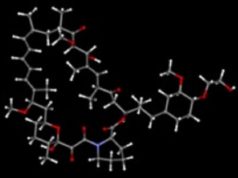
Cardiovascular Systems has announced the presentation of results from a large retrospective observational study of coronary orbital atherectomy, Diamondback 360, which took place at TCT Connect 2020 (14–18 October, virtual).
The presentation, authored by Nirat Beohar, professor of medicine and vice chief, Columbia University Division of Cardiology at the Mount Sinai Medical Center, Miami, USA, shows exceptional safety and high procedural success in 519 patients with severely calcified cardiac disease who were treated with orbital atherectomy prior to stent deployment, Cardiovascular Systems said in a press release.
Beohar said: “We studied over 500 patients with challenging coronary lesions. The lesions were heavily stenosed and calcified, measuring up to 60mm in length. Over half were classified as ACC/AHA Type C lesions, the most difficult anatomy. Despite treating these most complex cases, procedural and component angiographic complication rates were all below 1% and stents were successfully deployed in all procedures. In this contemporary real-world experience, orbital atherectomy system was found to be safe; successfully streamlining treatment for patients with the most significant coronary disease.”
Severe calcification of coronary lesions represents a major challenge to minimise procedural complications and optimise stent delivery, expansion and apposition for best percutaneous coronary intervention (PCI) outcomes. The Diamondback 360 Coronary orbital atherectomy system uses a dual mechanism of action to treat both superficial and deep calcium.
Scott Ward, chairman, president and chief executive officer, Cardiovascular Systems, said: “This study expands our evidence demonstrating the safe, effective use of orbital atherectomy to treat a real-world complex patient population. With 11 studies tracking over 2,200 patients to date, Cardiovascular Systems continues to extend its leadership in the development of medical evidence for the treatment of patients with severe coronary artery disease.”












